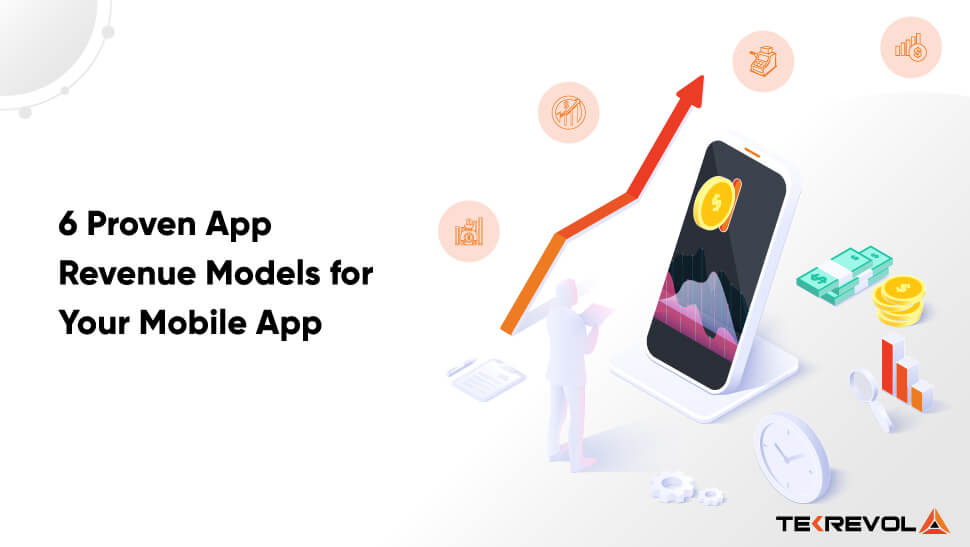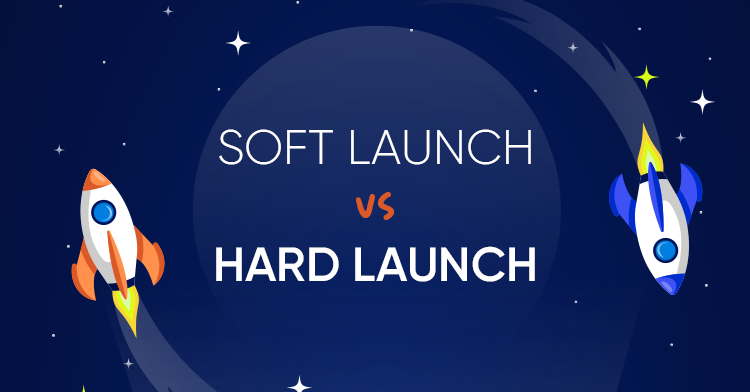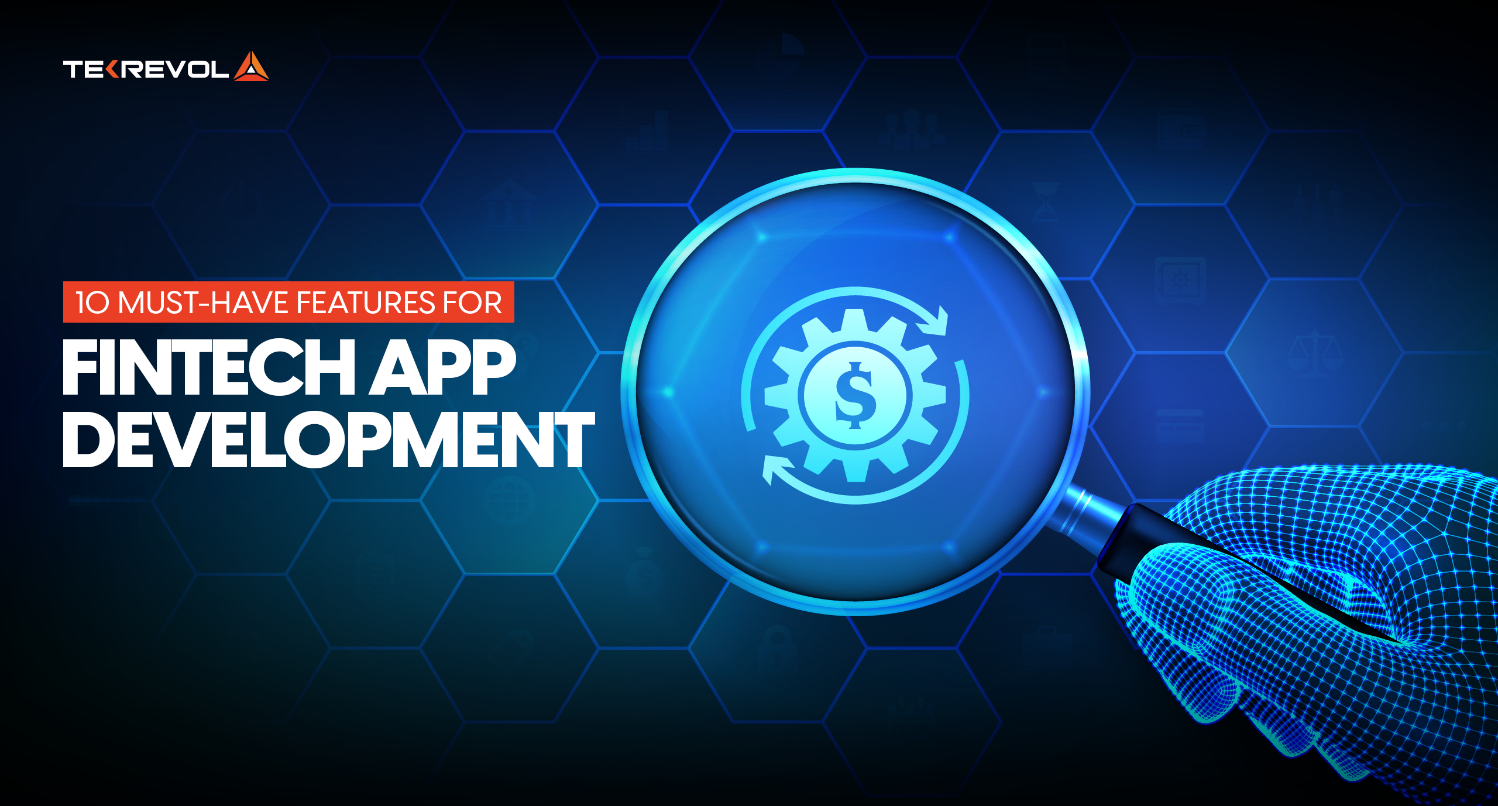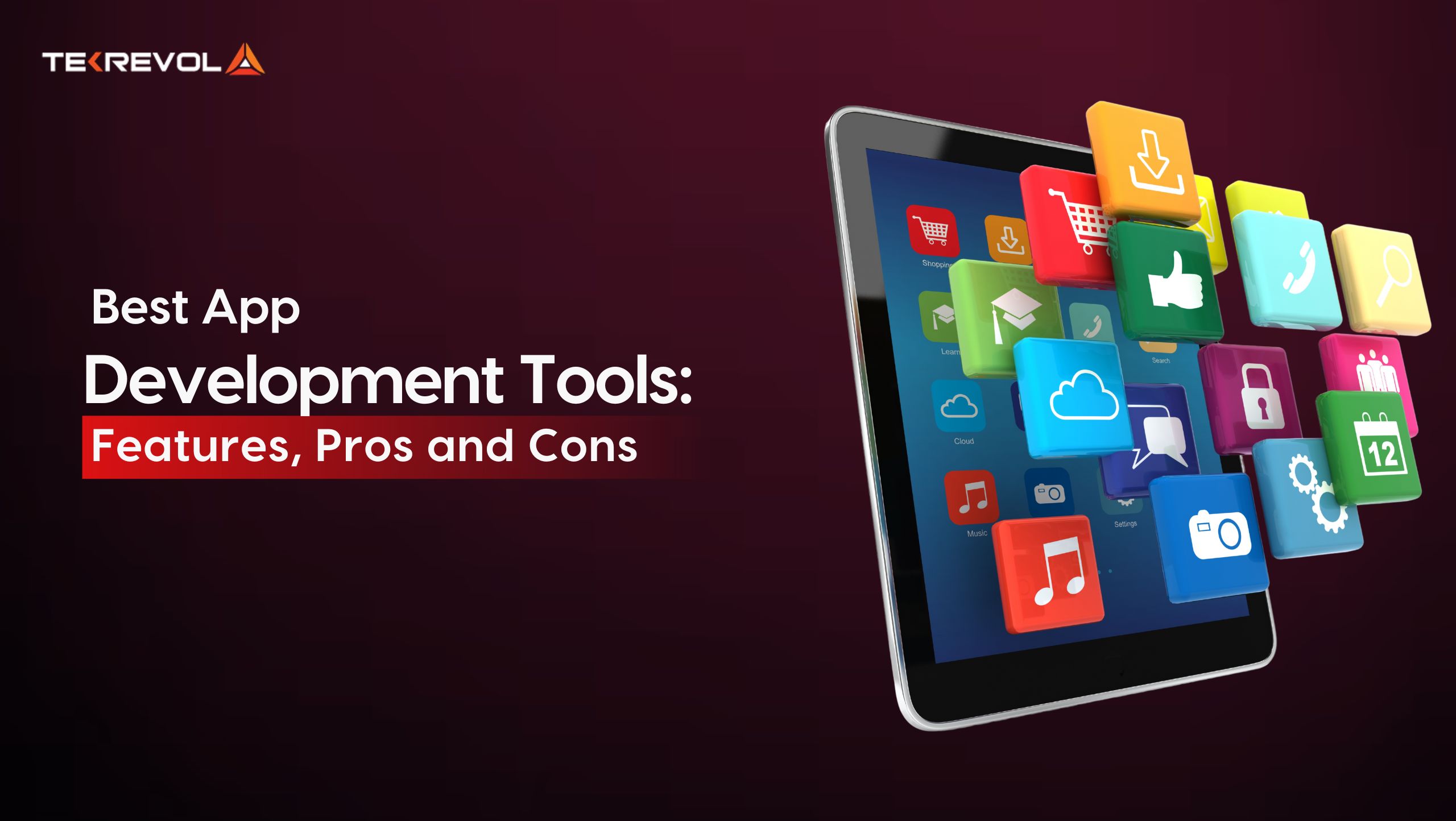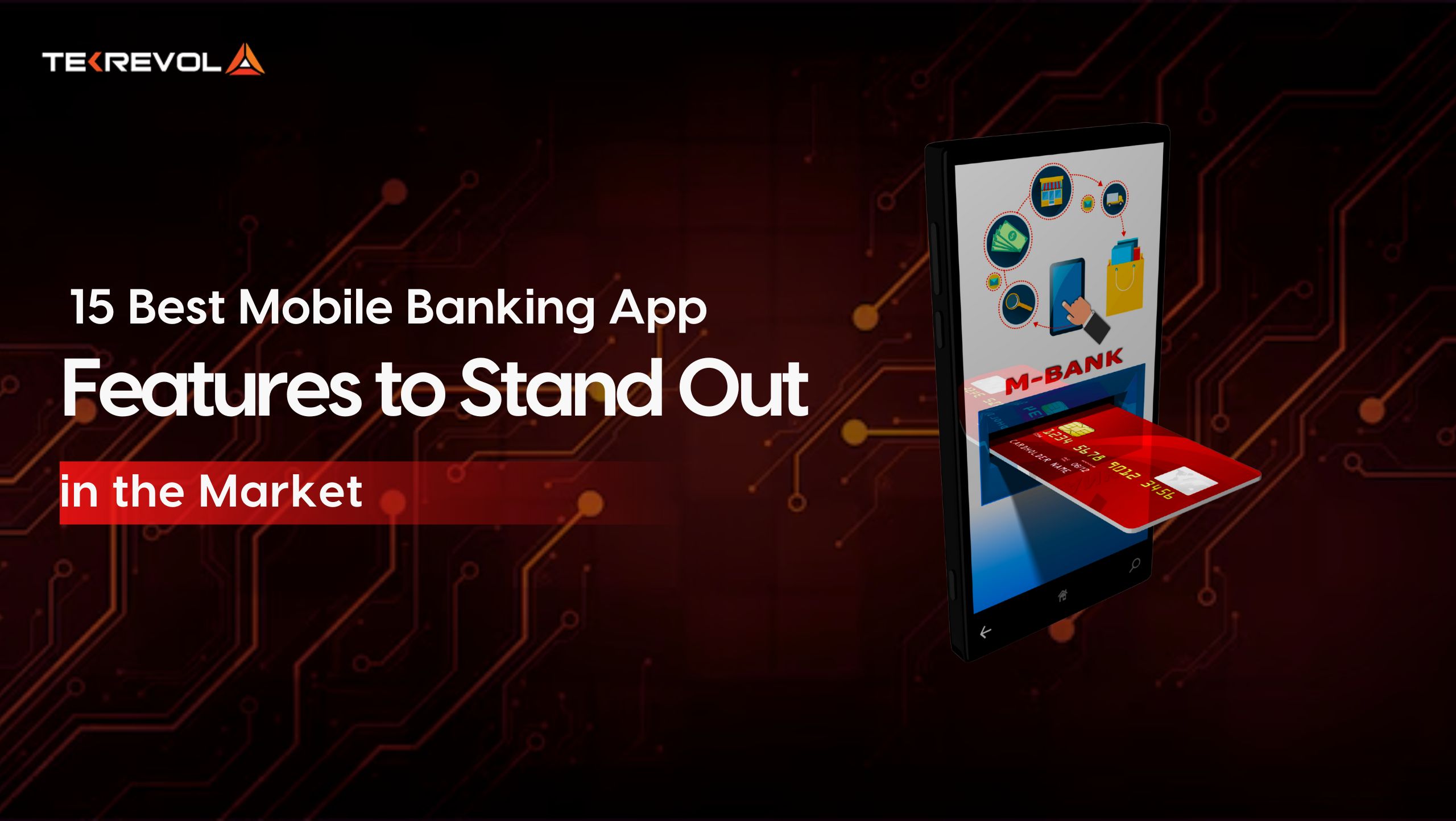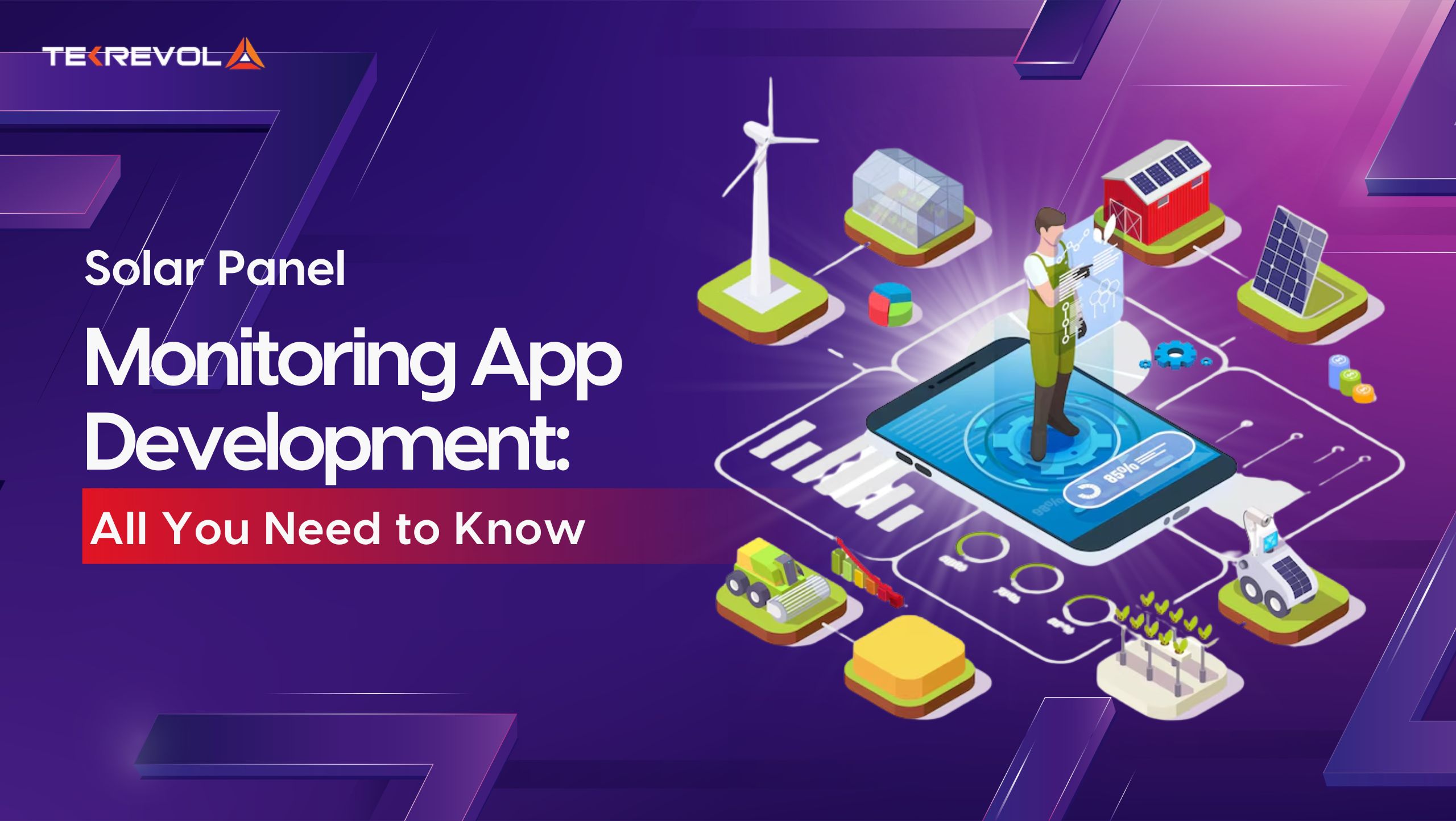There’s no point in creating an app that doesn’t have an effective app revenue model that intrigues the users into making the purchase from the app. Believe it or not, app revenue models are an integral part of your overall app development process that ensures high returns on your app.
It is quite obvious that entrepreneurs are not developing an app just because they have free time, they’re creating it so that they could achieve their financial targets by tapping into a whole new world of opportunities and possibilities.
According to a research, nearly 26% of the consumers start their search on branded apps. Therefore, although the conventional method of getting your product to the market by uploading it on different digital channels is still intact, however, it’s not the only profitable option that we’ve got today.
According to Statista, global mobile app revenues amounted to over 467,083.68 US dollars in 2023, now may be a really good time to select and integrate the best possible app revenue model to your mobile app.
So today, I’ve decided to end the struggle of entrepreneurs and developers by revealing the six best app revenue models that they can choose to make money with their apps.
Let’s take a closer look now!
- Get This Monetization Model For Your App
The 9 Successful App Revenue Models
The following are some of the most popular revenue models that you can use to create a robust and effective revenue stream for your app:
1. In-App Advertising Revenue Model
A research revealed that the in-app advertising market size was estimated to be $78.0 billion and this stunning figure was predicted to increase up to $90.7 billion in 2020. Looking for a future prediction of this monetization model? It is predicted to reach a whopping $472.64 billion mark by 2027.
The reason for such a drastic increase in the market value of this monetization model is due to the fact that 92.6% (4.32 billion) out of the 4.66 billion internet users access the internet using smartphones. Out of this massive user base, a significant number of users spend their time on apps.
Therefore, the integration of in-app advertising revenue model into your mobile app means that you’ll earn staggering revenue by serving ads to your users through your app. But in order to earn high revenue from this revenue model, your app needs to have a significant number of active users that engage with the app regularly.
Moreover, the integration process of this model is not complicated. The developers are required to integrate a code or SDK (software development kit) properly to the app’s code. Also, ad monetization companies are known to provide detailed documents and support in case of any difficulty.
- Get This Monetization Model For Your App
2. In-App Purchases Revenue Model
The best examples of this app revenue model are Clash of Clans or Candy Crush Saga. Both the apps allow users to buy additional components of the app for a specific amount. These components can include content, services, features, functionalities, and more.
With the In-App Purchasing revenue model, you can unlock a wide range of possibilities for your app by integrating several revenue sources within your app.
Generally, the In-App Purchasing model consists of two types ‘Consumables and Non-Consumables’. The Consumables are the items that need to be purchased in order to keep the unlocked feature active. Some examples of such items are:
- Coins in games.
- Additional lives in games.
- Digital money.
The Non-Consumable items don’t get depleted. They’re available for a one-time purchase and once you’ve got them, you can utilize them multiple times. The best example of such an item is a ‘course’ that you can buy from the Coursera or Udemy App.
- Get This Monetization Model For Your App
3. Data Monetization Revenue Model
We’re down to the monetization model that 59% of the internet users are concerned about ‘the data monetization model’. This model includes the selling of user’s data to companies for earning revenue.
Although this may not sound ethical or nice from the start, this is a legal way of making money.
And by the end of the day, you’re not sharing sensitive information like Credit card info, signature or account number, all the data is impersonated and usually, the purpose is to gain new insights from it.
So, how can your app earn from this monetization model?
Well, by collecting engagement, behavioral or attitudinal data from the users through your app, you can sell it to marketers, institutions, organizations, or third parties who’ll most probably utilize it for better customer targeting or customer experiences.
In return for the valuable data that you’re selling, businesses pay you a handsome amount therefore, you earn revenue.
However, as mentioned earlier, there’s a significant percentage of internet users who are concerned about their data being sold to third-parties.
For this reason, you need to tell them that you’re going to pass their data to third parties. You can provide this information in the form of a Privacy Policy or Terms of Services.
- Get This Monetization Model For Your App
4. Affiliate Marketing Revenue Model
This model is perfect if you have an addictive gaming app or you’re developing a mobile game. However, there are specific metrics that your app must meet to ensure high revenue through this monetization model.
For instance, if you have an existing gaming app, you must determine which user segment is playing your mobile game. You need to have a clearly defined target group, and based on the interests of that targeted group, you’ll be showing them relevant ads.
This approach would significantly increase the conversion ratio making your app an effective medium of marketing or revenue for businesses belonging to particular industry verticals. Therefore, you can expect businesses to show a great deal of interest in your app from the in-app marketing standpoint.
Additionally, if you’re building a mobile game app, you have the opportunity to build your audience from scratch, which means you can actually target a specific user segment from the initial stage.
Figuratively, there are 3.24 billion games globally. All of them have their own different habits, interests, personalities, and tastes.
Therefore, out of the billions of mobile gamers, you can break up different gaming audiences, depending on your preference, and get them to download your app. You can do this by running ad campaigns, implementing loyalty strategies, or building exciting and impactful app promos for your audience.
- Get This Monetization Model For Your App
5. Lead Generation Revenue Model
The lead generation model is similar to the affiliate revenue model however, the difference is that in the affiliate model the users were directed to tap on the ad, view the product and if interested they would buy the product.
Whereas, in the lead generation revenue model, the users are shown the ad so that they could tap on the ad, fill the form, and submit their contact information.
This information is either used by the app developers or forwarded to a third party who generally pay a very well amount for the information.
However, the key to earning more by leveraging this monetization model is by targeting a specific audience and delivering quality leads to businesses.
- Get This Monetization Model For Your App
6. Paid Apps Revenue Model
According to a Businessofapps, there are 2.65 million apps for Android and 1.85 million apps for iOS users. Amid the millions of apps available, 96.7% of the apps were free on Android and 92.9% of apps were free for iOS users. So, it’s pretty much clear that the world belongs to free apps.
However still, the remaining percent out of both Android and iOS apps belongs to the paid apps because there’s an option available in both the stores that let you offer paid apps in which the users are required to pay money to download an app.
After paying money, the user can seamlessly skim through all the features of the app, use it on multiple devices and do much more than the app offers.
Moreover, it requires an application to be outstanding and has innovative features that intrigue the audience into buying them.
And not only that but also the features need to deliver a stunning user experience while being more advanced than the features of the competitors.
Additionally, the revenue earned through this revenue model is super-connected to the new users that are downloading the app. The more downloads you get the more revenue you’ll earn. Therefore, you’ll be spending a lot of time and money on attracting new users to your app.
But since we’re an app development company, we know a thing or two about getting a paid app developed and downloaded by the users. Here are some of the tips:
- Get good reviews for your app. These reviews will help your app to build credibility in the market.
- Integrate a robust feature stack to your app and make sure it is delivering a highly competitive user experience.
- Implement the best marketing strategies to target more users who are interested in your app.
I’ve barely scratched the surface with the above-mentioned tips as there are several ways to ensure that your paid app gets all the downloads.
Moreover, the next time you search for a paid app, notice that they’re being offered by top brands, well-established businesses and widely recognized organizations.
If you’re a startup, chances are that your app hasn’t proven its value to the users and this increases the chances of failure of your monetization model.
- Get This Monetization Model For Your App
7. Freemium Model
The freemium model has been one of the most popular app revenue models, enabling users to use a free version of an app but with premium features available at a price.
This works very well for entertainment, productivity, and fitness apps. One such great example is Spotify, which offers free music streaming but with ads and charges for an ad-free service with better features.
The beauty of the freemium model is that it can make a significant user base without overtly nudging them to buy premium features.
According to a report by Sensor Tower, 79% of the highest-grossing mobile apps on the App Store are based on the freemium model.
But it is difficult to turn free users into payers since only up to 5% of freemium users upgrade to the premium version.
To cross this barrier, developers of apps have to balance free and premium services efficiently.
Having too many free features would deter people from upgrading, whereas having too many limitations could cause high rates of churn.
The secret is to provide enough value for free to engage users and make premium features irresistible.
- Get This Monetization Model For Your App
8. Subscription-Based Model
The subscription model is another strong app business model that sustains a steady stream of revenue by charging the customers on a weekly, monthly, or yearly basis.
Typical with SaaS applications, content platforms, and streaming media services, this model has powered the success of behemoths like Netflix and Apple Music, which bank billions of dollars annually from subscriptions.
Studies by Business of Apps indicate that subscription apps had a 41% revenue boost in 2023, proving to be feasible in today’s market. The model is preferred because users will pay for value on an ongoing basis, so it is effective for companies that provide continuous updates of content, exclusive access, or premium offerings.
Even though it is profitable, the subscription model has retention challenges. Subscribers cancel subscriptions after trials, resulting in high churn rates. To avoid this, companies should provide tiered pricing, recommendations based on individual preferences, and time-limited discounts to keep customers engaged and loyal.
Yet another major strategy is the use of AI-based user insights to customize subscription options. For example, Duolingo employs personalized reminders and streak incentives to prompt users to renew their subscriptions, which increases long-term revenue generation. Therefore, it assists you pondering how to make mobile app revenue.
- Get This Monetization Model For Your App
9. Hybrid Model
The hybrid model combines multiple app revenue models, allowing businesses to diversify their income streams. For example, an app can offer in-app purchases alongside in-app advertising revenue models, ensuring maximum revenue potential.
One such successful example of this model is PUBG Mobile, which offers in-app purchases, advertisements, and subscriptions.
A survey conducted by AppsFlyer revealed that hybrid monetization methods bring in 30% more revenue than one-revenue models.
By giving users multiple avenues for financial engagement, developers are able to maximize earnings while still ensuring user satisfaction.
Challenges also involve handling multiple revenue streams in a good way.
Bad execution can result in overloading users with too much monetization strategies, reducing user experience and retention levels.
The developers need to approach various strategies with precision, balancing them while integrating them seamlessly without sacrificing usability.
Analysis of A/B testing and user feedback helps in fine-tuning hybrid monetization strategies.
- Get This Monetization Model For Your App
Case Study: Maximizing Revenue with a Hybrid Approach
Take the case of a fitness app that implements several app revenue models for sustainable growth. First launched with a freemium model, the app introduced later in-app advertisement revenue models by way of sponsored workout content.
To maximize revenues further, premium workout plans were made available as in-app purchases, and a subscription model ensured regular revenues.
Challenges were high churn rates and user aversion to ads.
To mitigate these, the app optimized ad placement, implemented personalized subscription levels, and employed AI-powered engagement tactics. This led to 35% increased user retention and 50% increased revenue within a year.
Conclusion
To sum it all up, I would say that an effective revenue model is what every app needs to generate high revenues. However, just like I’ve mentioned in several places in the blog, you need to offer something really attractive in order to get users to make the purchase, use your app, and so on.
The revenue models in this blog will work wonders for your app if it is offering something that adds more value, enhances their experiences and above all helps them solve a particular problem.
Once you’re done with the ideation process, the revenue generation models will be waiting for you to select one out of the many available and start earning great revenue.
Lastly, we’re an app development company that just happens to know what it takes to make a mobile app project successful to ensure high revenue. Do you have an idea for an app? Click on the button below to get in touch!
- Do you have an idea for an app?
- Click on the button below to get in touch!
-
 Strategy
Strategy Design
Design Development
Development

 4347 Views
4347 Views August 27, 2021
August 27, 2021